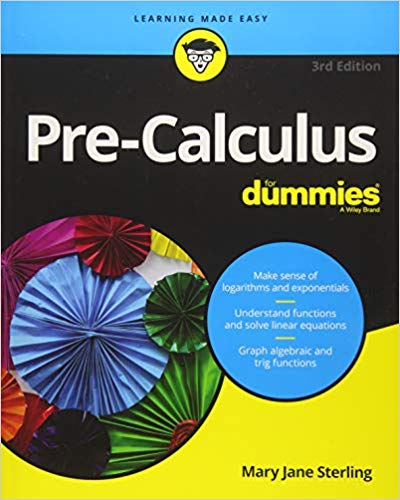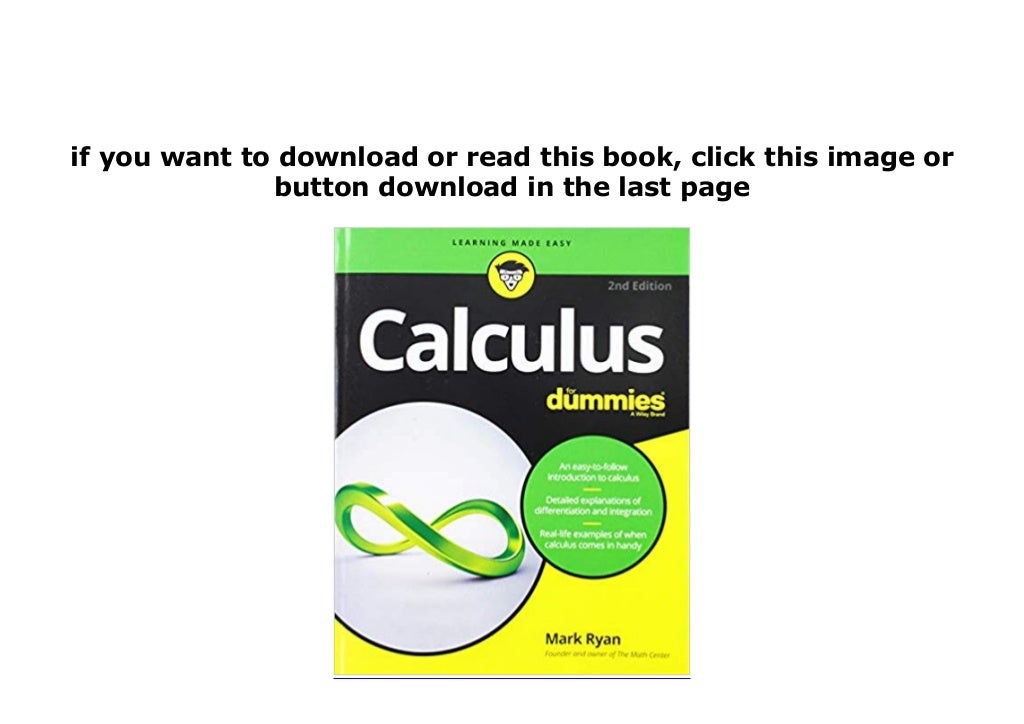
Calculus: Building Intuition for the Derivative.A Calculus Analogy: Integrals as Multiplication.Understanding Calculus With A Bank Account Metaphor.A Gentle Introduction To Learning Calculus.

Notes taken on calculus for dummies 2nd edition series#
Note: I’ve made an entire intuition-first calculus series in the style of this article: (PS: A kind reader has created an animated powerpoint slideshow that helps present this idea more visually (best viewed in PowerPoint, due to the animations). Let’s fingerpaint a bit, and get into the chemistry along the way. The natural log can be seen as an integral, or the time needed to grow. Case in point: e is technically defined by a limit, but the intuition of growth is how it was discovered.

Would it be so bad if everyone understood calculus to the “non-rigorous” level that Newton did? That it changed how they saw the world, as it did for him?Ī premature focus on rigor dissuades students and makes math hard to learn. I don’t want to (and can’t) teach an analysis course or train researchers. We’re looking at the sweetness of sugar from the level of brain-chemistry, instead of recognizing it as Nature’s way of saying “This has lots of energy. We’ve created complex mechanical constructs to “rigorously” prove calculus, but have lost our intuition in the process. Just a few words on “rigor”.ĭid you know we don’t learn calculus the way Newton and Leibniz discovered it? They used intuitive ideas of “fluxions” and “infinitesimals” which were replaced with limits because “Sure, it works in practice. I can feel the math pedants firing up their keyboards. That’s just not happening with your velocity equation. That ring/circle thing we made? You could build it out of several pipe cleaners, separate them, and straighten them into a crude triangle to see if the math really works. I prefer starting with physical, visual examples because it’s how our minds work. That’s great, but it can be hard to relate: honestly, how often do you know the equation for velocity for an object? Less than once a week, if that. Many calculus examples are based on physics. And sometimes the little things are easier to work with. This is a recurring theme in calculus: Big things are made from little things. Calculus showed us that a disc and ring are intimately related: a disc is really just a bunch of rings. This was a quick example, but did you catch the key idea? We took a disc, split it up, and put the segments together in a different way. Yowza! The combined area of the rings = the area of the triangle = area of circle! Calculus lets us start with $\text (r) (2 \pi r) = \pi r^2$, which is the formula for area! But most of us learn these formulas independently. Don’t these formulas seem related in some way? It all fits together.Ĭalculus is similarly enlightening. You know why sugar and fat taste sweet (encourage consumption of high-calorie foods in times of scarcity).
:max_bytes(150000):strip_icc()/914srYvaWiL-0fe7efaab62544f68f4e61a88d57d9f6.jpg)
You understand why drugs lead to resistant germs (survival of the fittest). My closest analogy is Darwin’s Theory of Evolution: once understood, you start seeing Nature in terms of survival. I have a love/hate relationship with calculus: it demonstrates the beauty of math and the agony of math education.Ĭalculus relates topics in an elegant, brain-bending manner.


 0 kommentar(er)
0 kommentar(er)
